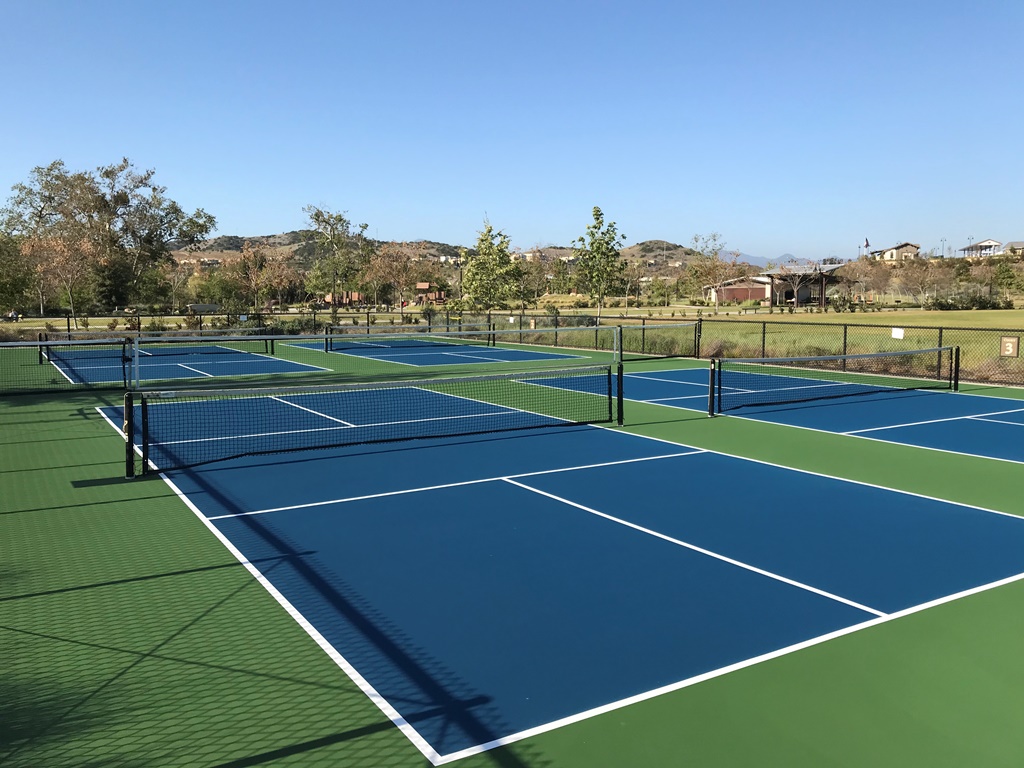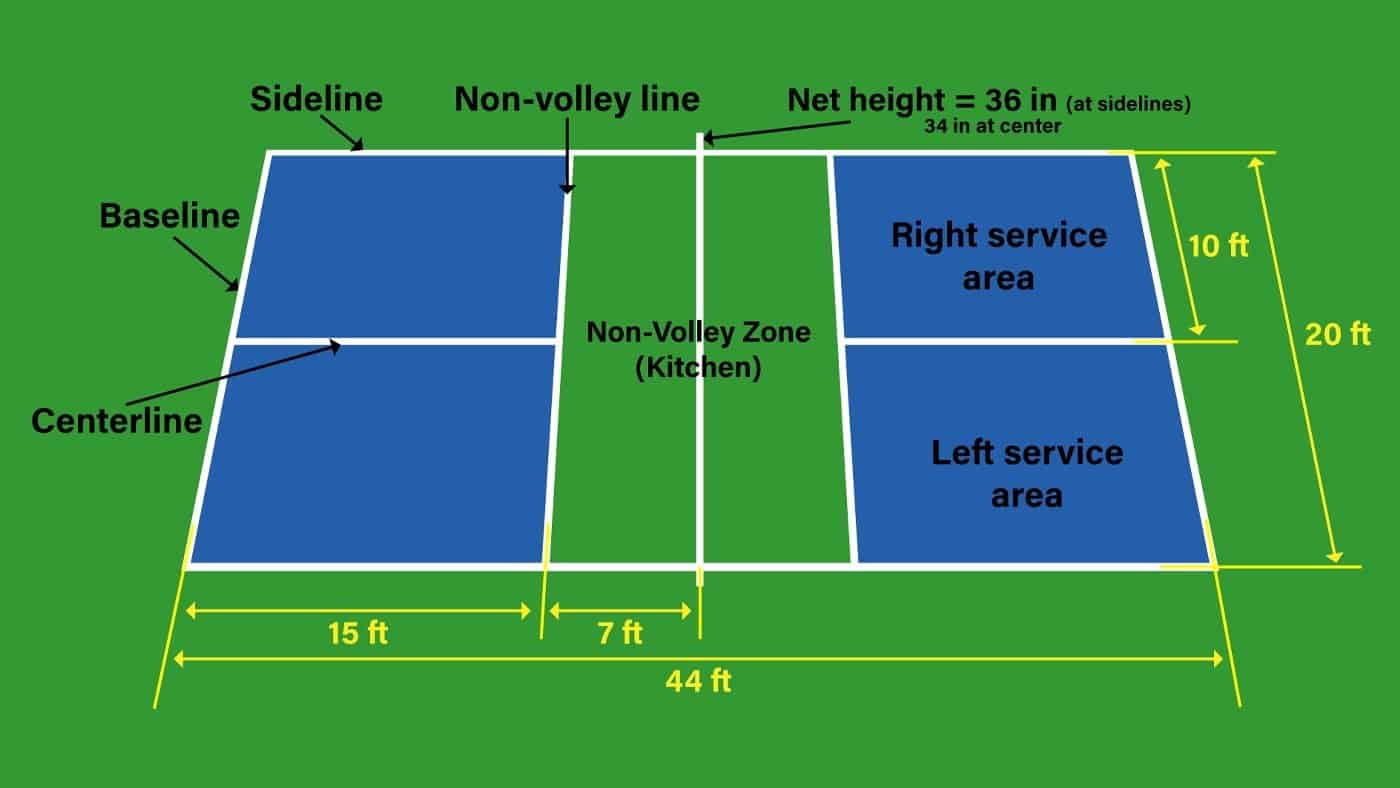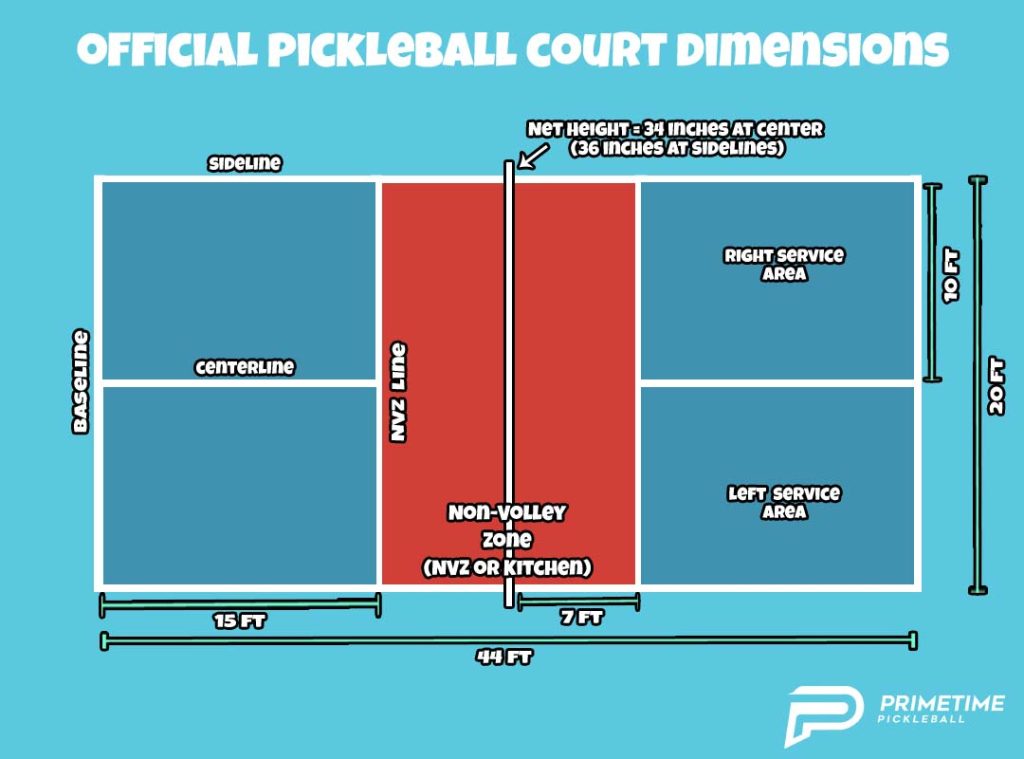What Are The Dimensions Of A Regulation Pickleball Court
A regulation pickleball court is the standard size court used for official pickleball games. Whether you are a beginner looking to learn the game or a seasoned player preparing for a tournament, it is important to understand the dimensions of a regulation pickleball court. In this article, we will explore the exact measurements of a pickleball court, the construction guidelines, and answer some frequently asked questions about pickleball court dimensions.
1. Pickleball Court Dimensions
The dimensions of a regulation pickleball court are standardized to ensure consistency and fairness in the game. A regulation pickleball court measures 20 feet wide and 44 feet long for both singles and doubles play. The court is divided into different sections, each with its specific markings and dimensions.

2. Court Construction Guidelines
When constructing a pickleball court, it is crucial to follow specific guidelines to ensure the court's proper dimensions and quality. These guidelines are set by the USA Pickleball Association (USAPA) and are essential for creating a safe and fair playing environment.
Here are some key construction guidelines for a regulation pickleball court:
- The court surface should be made of a firm, non-resilient material such as concrete, asphalt, or a similar material.
- The court should have a smooth and level surface without any cracks or irregularities that could affect gameplay.
- The net should be positioned in the center of the court, dividing it into two equal halves.
- The net height should be 36 inches at the sidelines and 34 inches at the center.
- The court should have proper line markings, including boundary lines, center lines, service lines, and kitchen lines.
3. Frequently Asked Questions
Q: What are the dimensions of the pickleball court lines?
A: The dimensions of the pickleball court lines are as follows:
- The baseline is 22 feet from the net on both sides.
- The sideline is 20 feet from the centerline on both sides.
- The service line is 15 feet from the net on both sides.
- The kitchen line (non-volley zone) is 7 feet from the net on both sides.
- The centerline divides the court into two equal halves.
Q: Can the court dimensions be adjusted for recreational play?
A: Yes, the court dimensions can be adjusted for recreational play. While the regulation court size ensures consistency in official games, recreational players can modify the court size according to their available space and preferences. However, it is recommended to stay as close to the regulation dimensions as possible to maintain the integrity of the game.
Q: Are there different court dimensions for singles and doubles play?
A: No, the court dimensions are the same for both singles and doubles play. The only difference is the number of players and the strategies used in the game.
Q: Why are there different net heights at the sidelines and the center?
A: The different net heights at the sidelines and the center of the court help to prevent players from gaining an unfair advantage by hitting powerful shots close to the net. The slightly lower net height at the center encourages strategic placement and dinking shots, which adds to the overall skill and balance of the game.
Understanding the dimensions of a regulation pickleball court is essential for players, court builders, and tournament organizers. By adhering to the standardized dimensions and following the construction guidelines, players can enjoy a fair and competitive game of pickleball. Whether you are planning to play recreationally or competitively, remember to respect the boundaries and markings of the court for a enjoyable and successful pickleball experience.
Pickleball Court Dimension & Construction Guide – Amazin' Aces
pickleball ruitsparfait
Combien De Terrains De Pickleball Conviennent Sur Un Court De Tennis
 Image Source : theelegantchef.com
Image Source : theelegantchef.com Pickleball Rules And Scoring - Northern Beaches Pickleball Club
 Image Source : northernbeachespickleball.org.au
Image Source : northernbeachespickleball.org.au pickleball
6 Things To Know Before Building A Pickleball Court
 Image Source : www.byrneandjones.com
Image Source : www.byrneandjones.com pickleball volleyball regulation backyard surface before know sportycious volley same clearly contrasting
Pickleball Courts - USA Pickleball | Pickleball, Pickleball Court, Court
 Image Source : www.pinterest.com
Image Source : www.pinterest.com pickleball pickle courts
Pickleball Court Dimensions Printable - Printable World Holiday
 Image Source : promo.pearlriverresort.com
Image Source : promo.pearlriverresort.com Pickleball Court Size In Feet (Pickleball Court Dimensions Beginner's
 Image Source : primetimepickleball.com
Image Source : primetimepickleball.com What Are The Dimensions Of A Pickleball Court? | Pickleheads
 Image Source : www.pickleheads.com
Image Source : www.pickleheads.com Pickleball pickle courts. Pickleball volleyball regulation backyard surface before know sportycious volley same clearly contrasting. 6 things to know before building a pickleball court. Combien de terrains de pickleball conviennent sur un court de tennis. Pickleball court dimensions printable